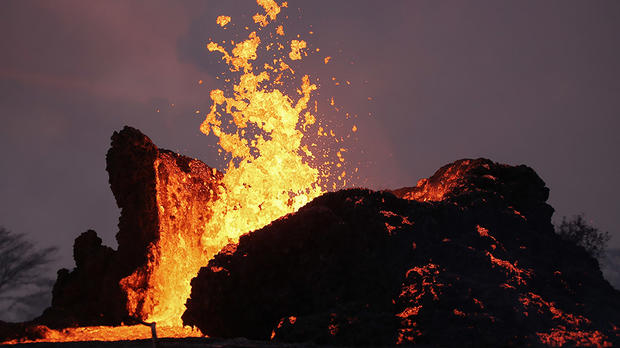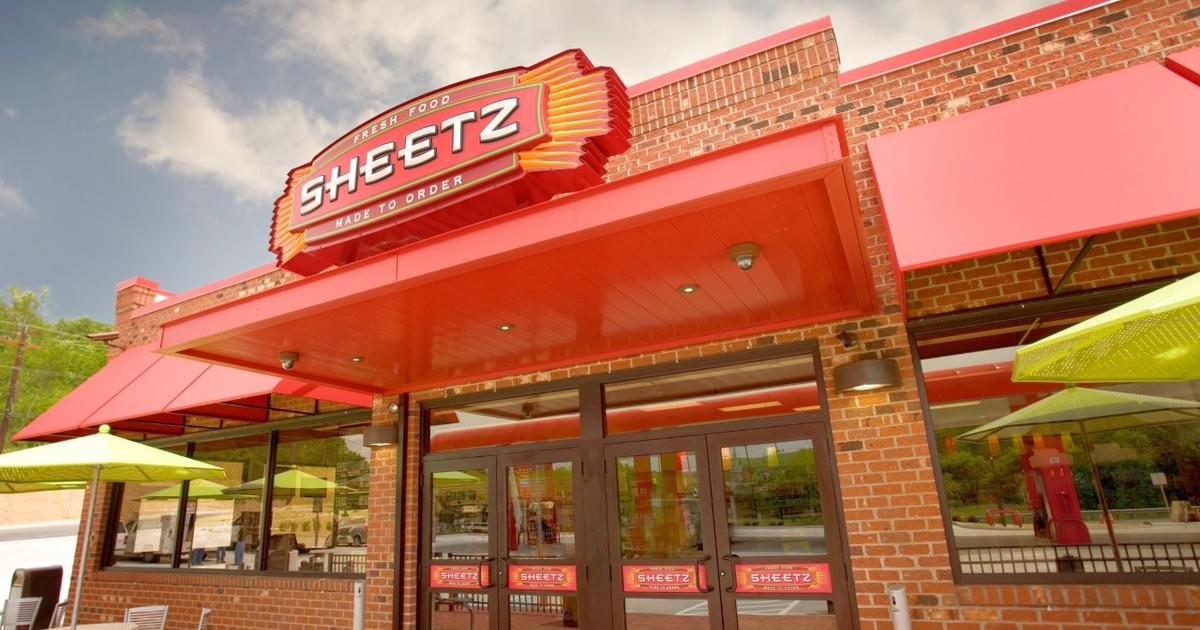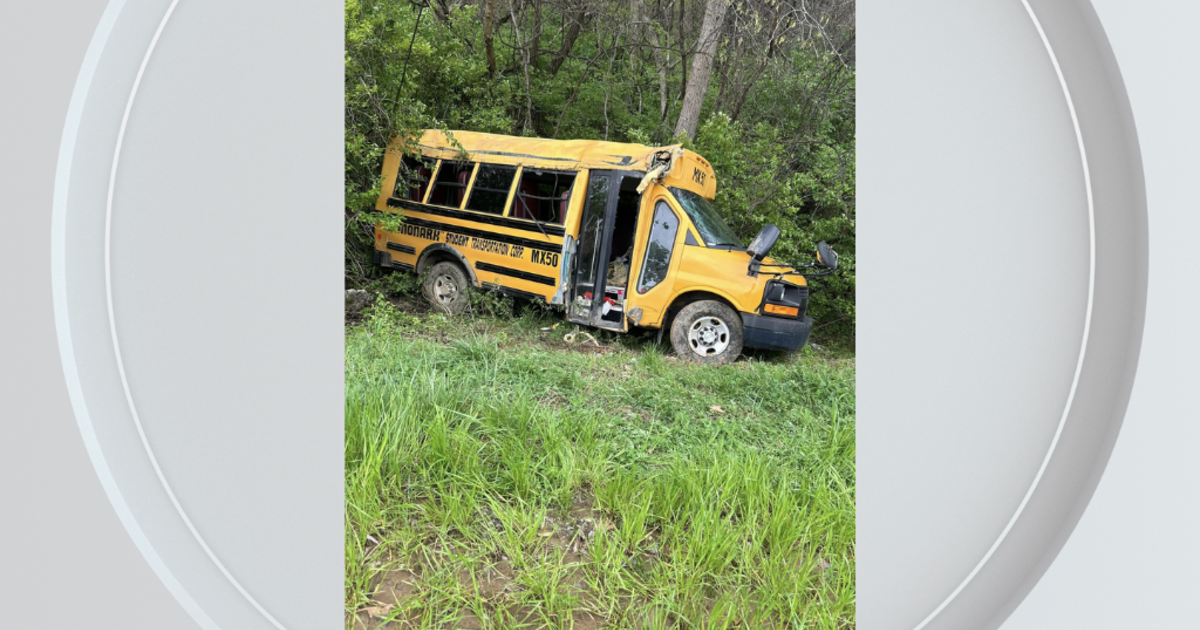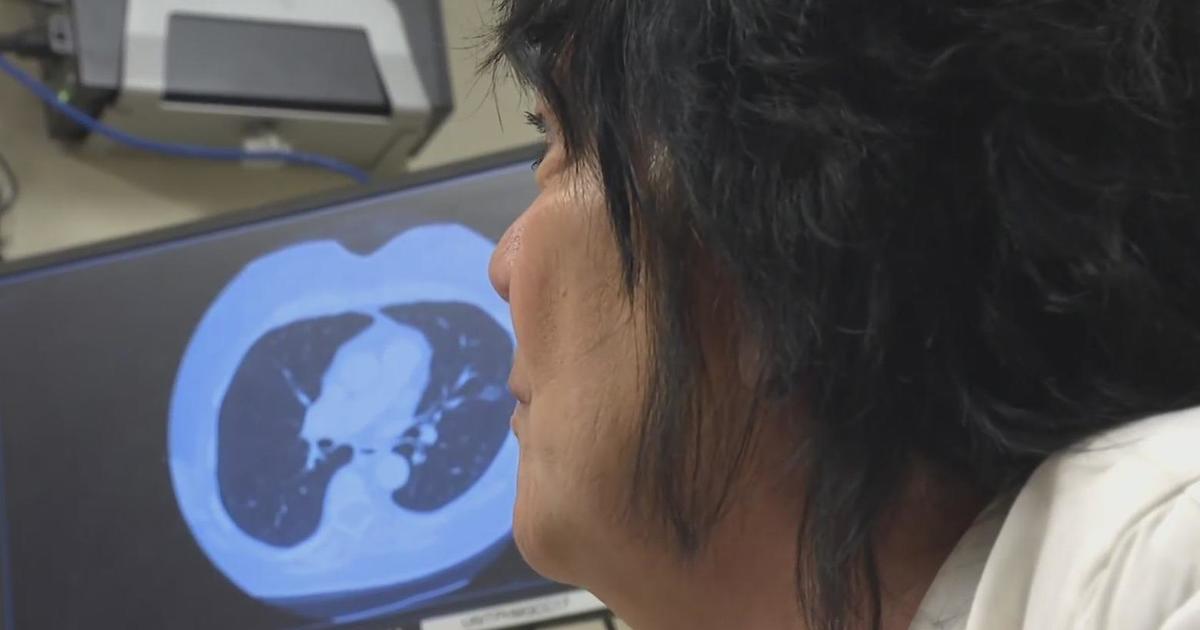Blue Flames Join Lava Light Show On Hawaii During Kilauea Eruption
Follow KDKA-TV: Facebook | Twitter
By: Nicole Chavez, CNN
(CNN) -- People around the world have been transfixed by images of fountains of red and orange lava oozing out of volcanic vents on Hawaii's Big Island. Now blue has joined the mix: the blue flames of burning methane gas.
A photo shared by the United States Geological Survey shows striking blue flames peeking through the cracks of the street. Lava from the Kilauea volcano has been burning through plants and shrubs, producing methane.
Buried and burning vegetation produces methane, ignited in road cracks to produce a blue flame [Kīlauea Volcano's Lower East Rift Zone]. https://t.co/qm9m5nRLb1 pic.twitter.com/20ceuLcFme
— USGS Volcanoes???? (@USGSVolcanoes) May 23, 2018
The gas "can seep into subsurface voids and explode when heated" or "emerge from cracks in the ground several feet away." And once ignited, it produces a blue flame, the USGS said.
"It's very dramatic. It's very eerie," Jim Kauahikaua, a scientists with the US Geological Survey, told reporters Wednesday.
It has been three weeks since the Kilauea volcano erupted, sending a smoldering flow of lava into residential areas and forcing thousands of residents from their homes, and the danger has not passed.
Lava reaches the Pacific, again
The lava is still "moving very vigorously," keeping Big Island residents on alert and away from the ocean.
Lava reached the Pacific Ocean earlier this week and a new lava flow is expected to enter the ocean east of MacKenzie State Park on Thursday, according to the Hawaiian Volcano Observatory.
Authorities are urging people to stay away from areas where lava meets the ocean because of its hazards.
When hot lava hits the ocean, it can form a nasty product called laze -- a mashup of "lava" and "haze" -- and send hydrochloric acid and volcanic glass particles into the air.
Laze can cause lung, eye and skin irritation. And it has proven deadly in the past.
"This hot, corrosive gas mixture caused two deaths immediately adjacent to the coastal entry point in 2000, when seawater washed across recent and active lava flows," the Hawaiian Volcano Observatory said.
Gigantic cracks may swallow home
Residents in the Leilani Estates community have seen their neighborhood transformed by the lava. Streets turned into rivers of black molten rock, the vegetation has become rotten and now they are fearful their homes could be swallowed by the cracks.
Tam Hunt took photos Monday of his neighbor's house, showing the ominous cracks splitting the ground under the home. While the family home is still above ground, a corner of the property looks like it's barely holding on from crumbling into the abyss below.
"I saw the family checking their house on Friday and the crack was not as bad. I went back Monday and noticed that it had gotten worse, so I texted (the homeowner) about it," Hunt said.
Hunt said the property has been in the neighbor's family since 1991 and the couple moved into the home right before they had their two children, but now it seems they'll never be able to call this place home again.
"I expect the home to be completely gone soon. Every time we go back to see the damage, we notice that the earthquakes keep making the cracks wider and wider," said Hunt.
The-CNN-Wire
™ & © 2018 Cable News Network, Inc., a Time Warner Company. All rights reserved.




